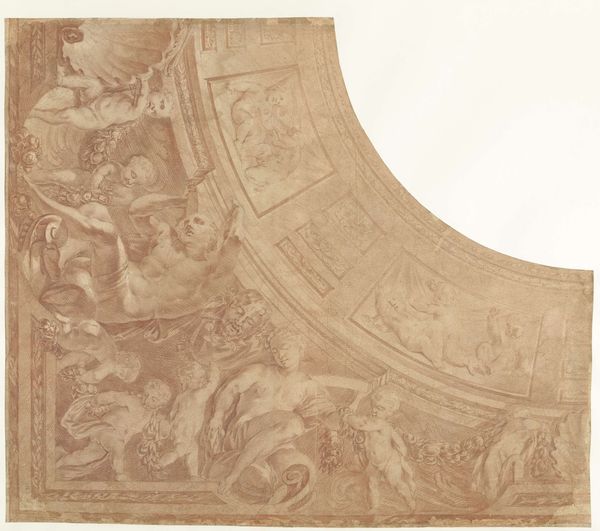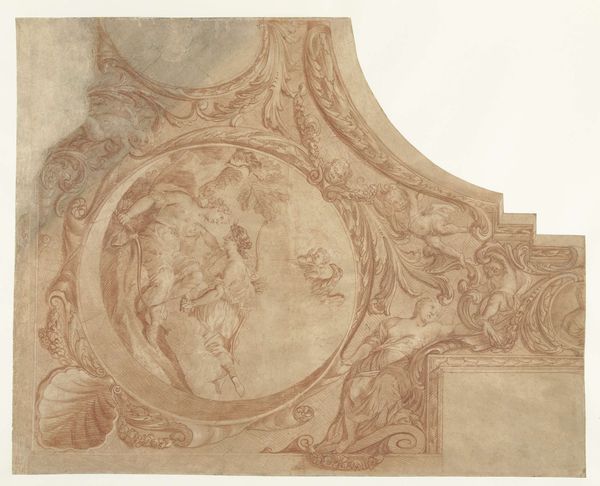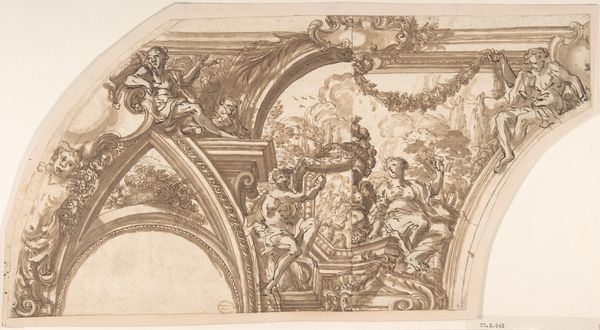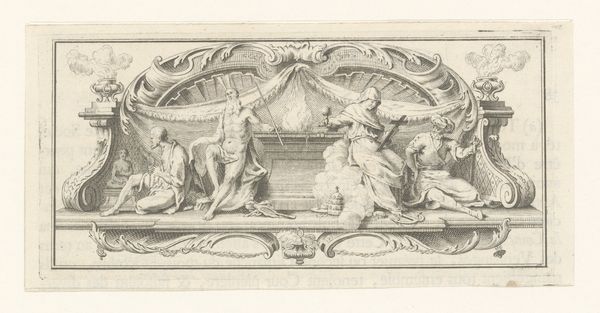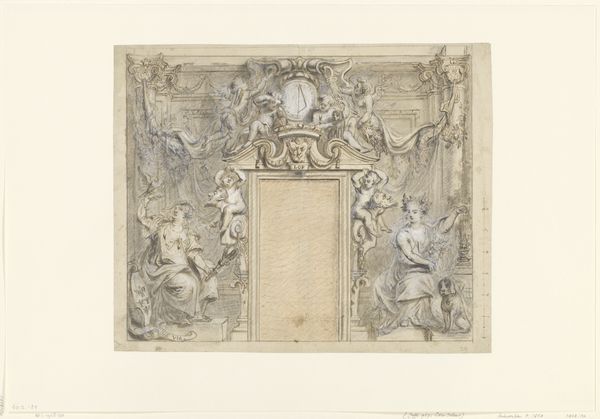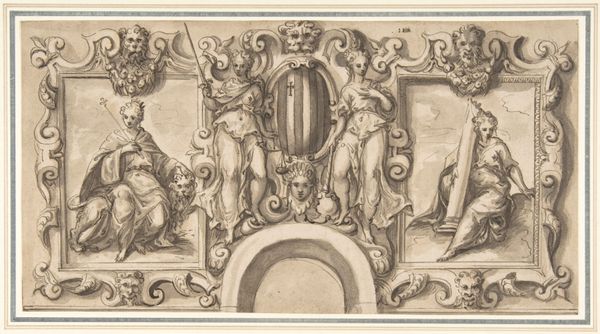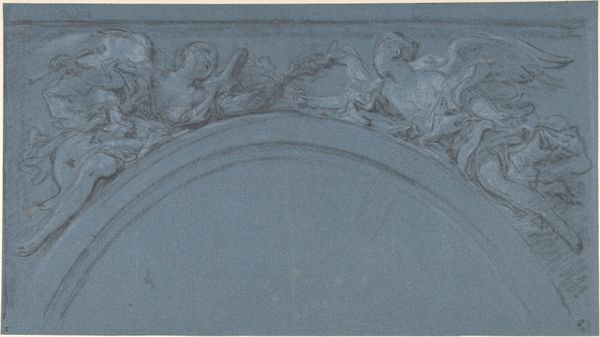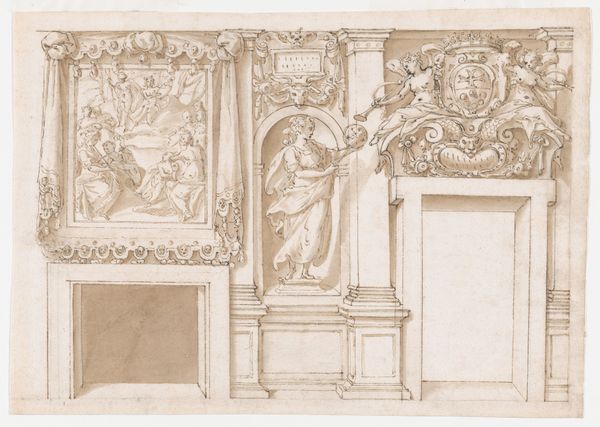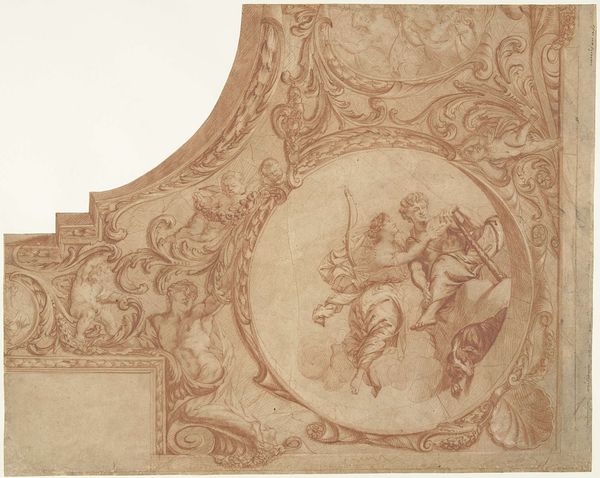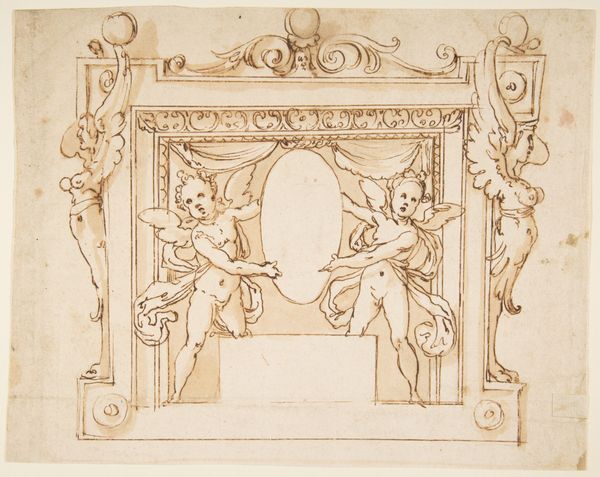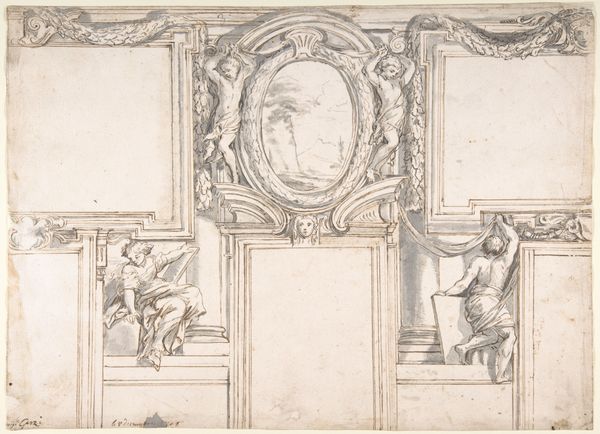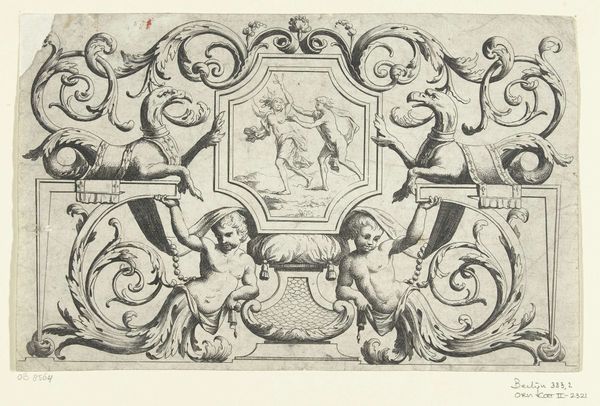
Ontwerp voor een hoekstuk van een plafond met Jason en Medea 1680 - 1757
0:00
0:00
mattheusterwesten
Rijksmuseum
drawing, paper, pen
#
drawing
#
allegory
#
narrative-art
#
baroque
#
charcoal drawing
#
figuration
#
paper
#
pencil drawing
#
pen
#
history-painting
Dimensions: height 568 mm, width 453 mm
Copyright: Rijks Museum: Open Domain
Editor: So, this drawing, “Ontwerp voor een hoekstuk van een plafond met Jason en Medea” by Mattheus Terwesten, was created sometime between 1680 and 1757. It’s a pen, pencil, and charcoal drawing on paper, located at the Rijksmuseum. It depicts the figures in this ornate, Baroque style, giving off a really grandiose feel. How do you interpret this work, focusing on its materiality? Curator: Well, considering it's a ceiling design, we need to think about the process. Terwesten's choice of readily available materials like pen, pencil, and charcoal shows how crucial pragmatism was. But notice how the materiality of those "humble" media transforms the mythology of Jason and Medea for consumption in an opulent setting. Can the story itself become another "material," shaped and deployed to produce wealth? Editor: That's a great point. So you're saying the medium, in this case the drawing and the intended final work on a ceiling, is almost commodifying the classical narrative? Curator: Exactly! Think about the labour involved—Terwesten's hand, the artisan translating the design onto the ceiling, the patron who consumes the artwork. How does this image reflect Baroque values? Consider its allegorical meaning and intended location; how does it become symbolic of power and status in a Materialist understanding? Editor: It definitely shifts my perception. It’s easy to get caught up in the figures and narrative. Seeing it as part of this larger production process and the message the materials create makes it all much richer, but also perhaps reveals how art becomes intertwined with the elite class. Curator: Precisely! By tracing the artistic production, this drawing gives insight into art, not only as an object, but as an intersection of materials, labor, and power. We must question and investigate what materials are being used to construct and serve what social, financial, and intellectual pursuits.
Comments
No comments
Be the first to comment and join the conversation on the ultimate creative platform.
